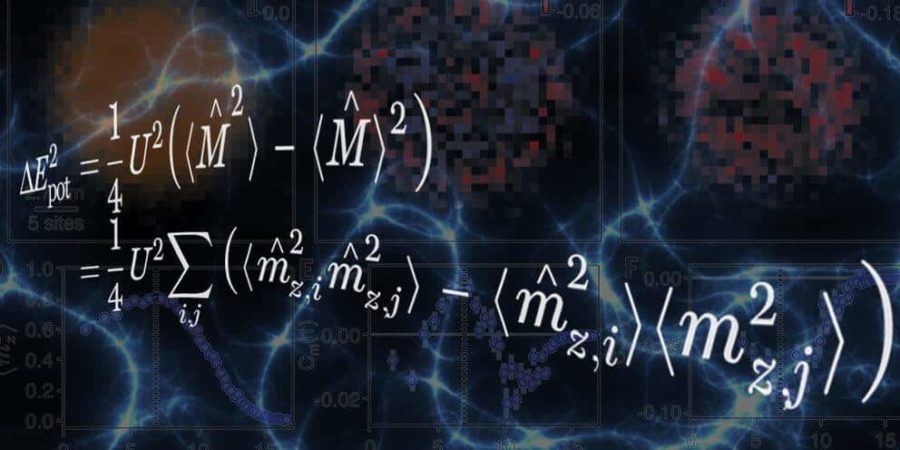The quest to know the mysterious recipe for high-temperature superconductivity, which could enable revolutionary advances in technologies that make or use electricity, just took a big leap forward thanks to new research by an international team of experimental and theoretical physicists.
The research paper appears in the journal Science on Sept. 16, 2016. The research is focused on revealing the mysterious ingredients required for high-temperature superconductivity — the ability of a material’s electrons to pair up and travel without friction at relatively high temperatures, enabling them to lose no energy — to be super efficient — while conducting electricity.
The research team’s achievements are an important step in recent efforts to improve today’s superconducting materials, which have superconducting powers only if they are cooled below a critical temperature, hundreds of degrees below the freezing point of water — temperatures at which helium is a liquid — making them impractical for use in most electronic devices.
“We want to understand exactly which ingredients are necessary for high-temperature superconductivity, a beautiful quantum phenomenon with potentially important uses,” said Marcos Rigol, professor of physics at Penn State University and a theorist on the research team led by Martin Zwierlein, professor of physics and principal investigator at the NSF Center for Ultracold Atoms and the Research Laboratory of Electronics at the Massachusetts Institute of Technology (MIT).
For the first time, experimenters on the team have made hundreds of observations of individual potassium atoms, cooled to just slightly above absolute zero, trapped by lasers in a two-dimensional grid, and interacting with each other in intriguing ways that could help to reveal the behaviors of superconducting electrons. The team’s scientists suspect that they have observed one of the important dynamics that contribute to producing high-temperature superconductivity; that is, that electrons start forming pairs that “bunch” with empty spaces in the lattice.
An important contribution of the theorists on the team is their demonstration that the mathematical model developed to understand real materials (the so-called Hubbard model) could reproduce the behaviors of the atoms in the team’s 2-D experiments within a certain temperature range.
“If we can discover all the essential ingredients for superconductivity, we will have the opportunity to design recipes — theoretical models — for making high-temperature superconducting materials that can have a wide range of practical and innovative uses,” Rigol said.
Zwierlein led the team in building the experimental setup to help identify the ideal conditions for inducing superconductivity. This “quantum simulator” experiment uses atoms in a 2-D gas as stand-ins for electrons in a superconducting solid in order “to understand what’s really going on in these superconductors, and what one should do to make higher-temperature superconductors, approaching hopefully room temperature,” Zwierlein said.
Because of strong interactions, which are thought to be essential for high-temperature superconductivity to occur, not even the most powerful computers in the world have been able to solve the Hubbard model at the temperatures at which electrons are expected to become superconducting. A challenge for physicists, then, is to come up with computational techniques that can solve this model at the lowest possible temperatures in the current supercomputers. Rigol and collaborators developed one such technique, which was able to describe the experimental results.
“Our theoretical results precisely describe how the atoms in our team’s 2-D experiments actually behaved within the accessible temperature range,” Rigol said. “If future experiments are able to demonstrate at lower temperatures that the atoms in the experimental quantum simulator become superconducting — at temperatures at which our equations are just too difficult to solve — then we will know for sure that our theoretical model of high-temperature superconductivity is a good one.” The approach is a bit like one used in the field of astrophysics, where the experimental detection of gravitational waves recently served as a test and a validation of Einstein’s theory of general relativity.
The team’s results are important because, if superconductivity is observed at lower experimental temperatures, “we will know for sure that strong repulsive interactions between the electrons can produce high-temperature superconductivity,” Rigol said.
“Achieving this understanding could have a profound impact in technology, as well, because knowing the features of a material that are necessary for producing high-temperature superconductivity could lead to the engineering of more advanced superconducting materials.”
In addition to Rigol at Penn State and Zwierlein at MIT, the research team includes Lawrence W. Cheuk, Matthew A. Nichols, Katherine R. Lawrence, Melih Okan, and Hao Zhang at the MIT-Harvard Center for Ultracold Atoms; Ehsan Khatami (a former postdoctoral researcher in Rigol’s group) at San José State University; Nandini Trivedi at Ohio State University; and Thereza Paiva at the Universidade Federal do Rio de Janiero.
This research was supported, in part, by the National Science Foundation, the Air Force Office of Scientific Research, the Army Research Office, and the David and Lucile Packard Foundation.
If our reporting has informed or inspired you, please consider making a donation. Every contribution, no matter the size, empowers us to continue delivering accurate, engaging, and trustworthy science and medical news. Independent journalism requires time, effort, and resources—your support ensures we can keep uncovering the stories that matter most to you.
Join us in making knowledge accessible and impactful. Thank you for standing with us!

